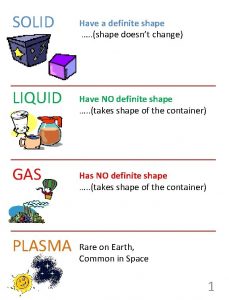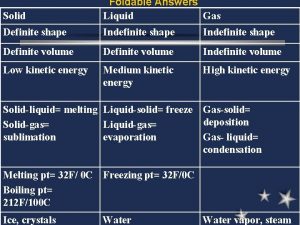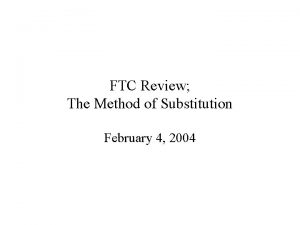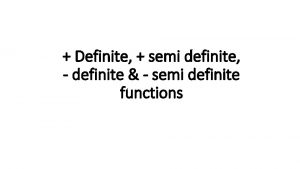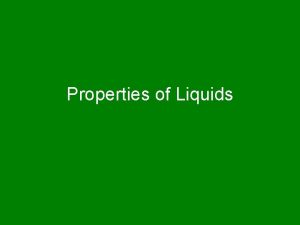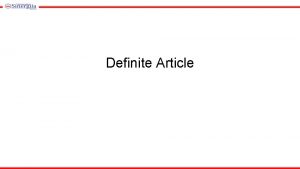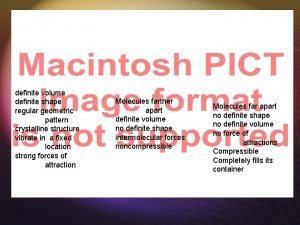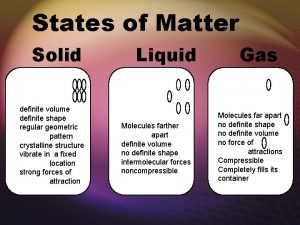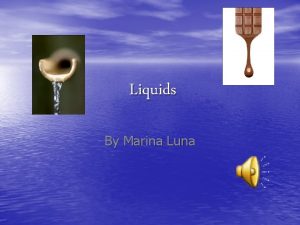Properties of Liquids Properties of Liquids Definite volume

















- Slides: 17

Properties of Liquids

Properties of Liquids • Definite volume • Indefinite shape • Particles close together, but can move little bit – Liquids can flow

• Density liquids much greater than gases – Ex: DH 2 O(l) is 1250 x greater than DH 2 O(g) at 25 C (room temp) • Liquids can be compressed but change in volume very slight & requires enormous pressure

Viscosity • Liquids exhibit viscosity • Viscosity = resistance to flow

• Viscosity depends on: – strength of IMF – sizes & shapes of molecules – & temperature • stronger the IMF, the higher the viscosity – as temperature , viscosity

• engine oil prevents direct metal to metal contact • thin film oil on surfaces prevents metal from flaking • if oil too thick, won’t circulate at low temps • if oil too thin, will lose film strength at high temps

Where does the marble drop fastest? water Slowest? glycerol

Viscosity & Petroleum Drilling

Surface Tension • Particles at surface of liquid exist in unbalanced environment – No attraction from above to balance attractions from below • surface seeks smallest possible area Net attractive force pulling down

Surface Tension • Surface Tension = E required to ↑surface area = measure of inward pull • Strong intermolecular attractions High surface tension




Surfactants • Compounds that lower surface tension of H 2 O • Disrupt hydrogen bonds between H 2 O molecules • See video

Capillary Action • water forms concave meniscus in glass tube • attractive forces between water and glass greater than attractive forces between water molecules • upward movement of liquid in narrow tube = capillary action


Force(H 2 O-glass) Force(H 2 O- H 2 O) Force(Hg-glass) Force(Hg-Hg) CONVEX CONCAVE meniscus
 Solid liquid gas plasma
Solid liquid gas plasma Indefinite shape
Indefinite shape Circuit training properties of definite integrals
Circuit training properties of definite integrals Properties of liquid state of matter
Properties of liquid state of matter Properties of solid liquid and gas
Properties of solid liquid and gas Solids liquids and gases section 2 properties of fluids
Solids liquids and gases section 2 properties of fluids Solid
Solid Properties of solids and liquids
Properties of solids and liquids Solute
Solute Lung capacity
Lung capacity Mean stroke volume
Mean stroke volume Volume kerucut = .....x volume tabung *
Volume kerucut = .....x volume tabung * Stroke volume ejection fraction
Stroke volume ejection fraction Formulation of large volume parenterals
Formulation of large volume parenterals Properties of matter definition
Properties of matter definition Brain pop density
Brain pop density Pupitre definite article
Pupitre definite article Exploration 1-3a introduction to definite integrals
Exploration 1-3a introduction to definite integrals
